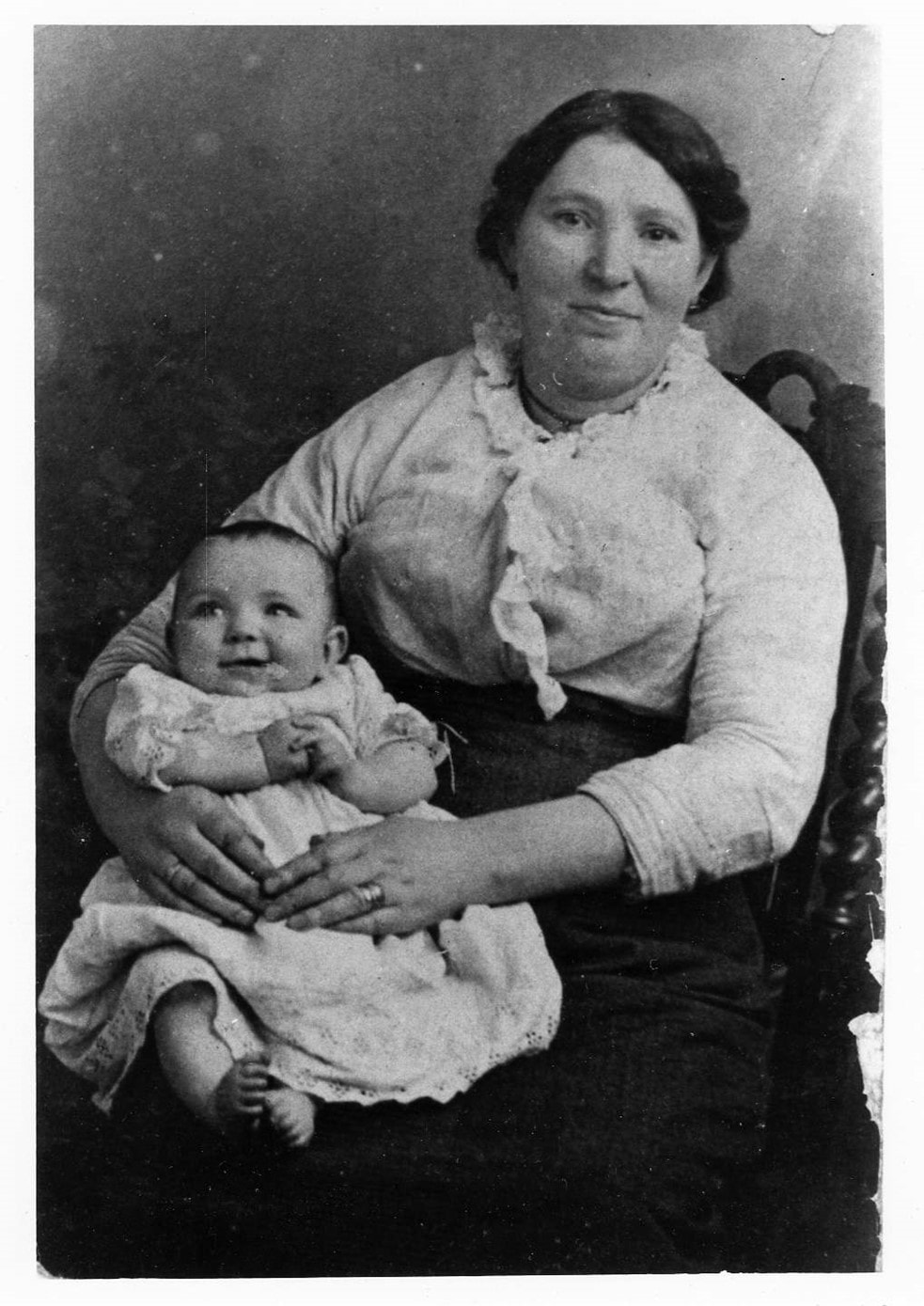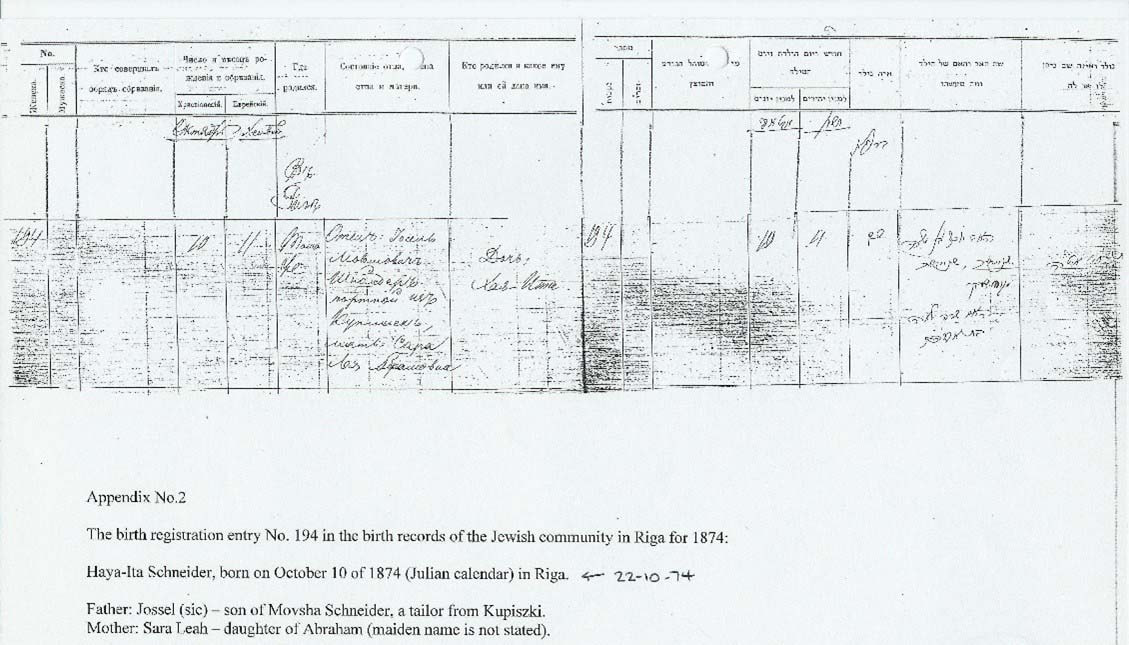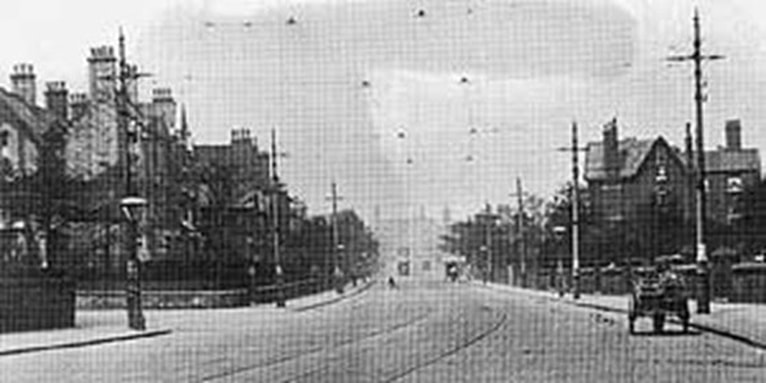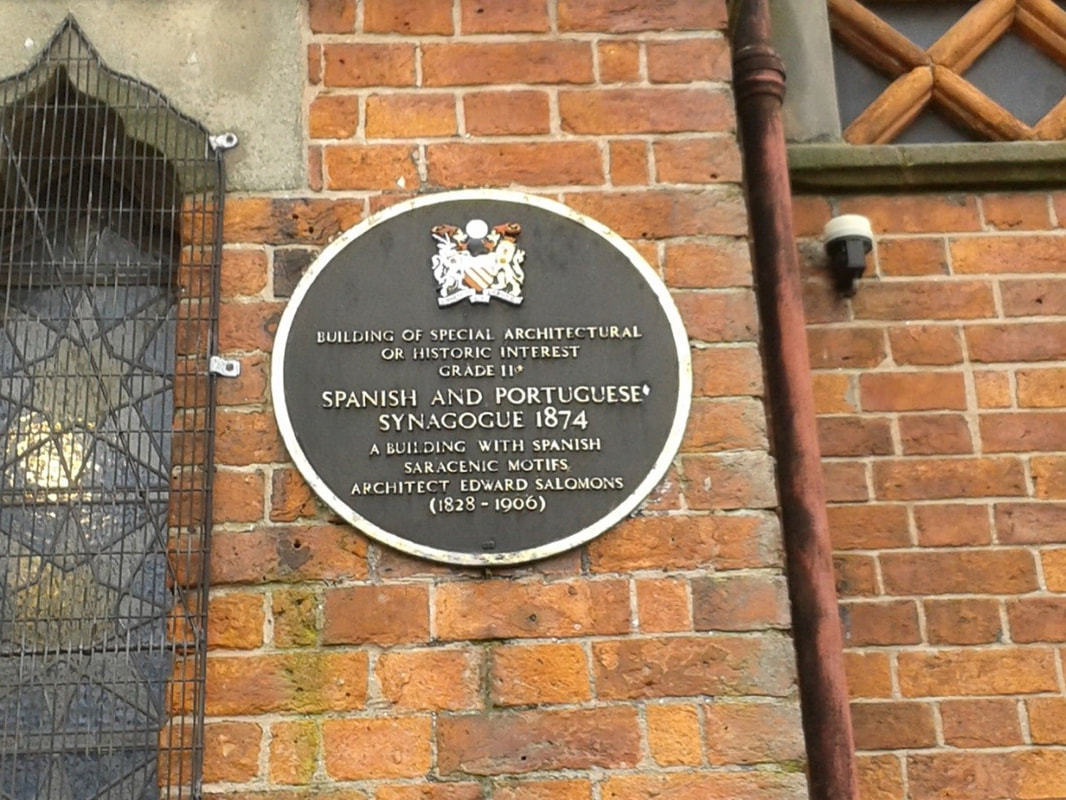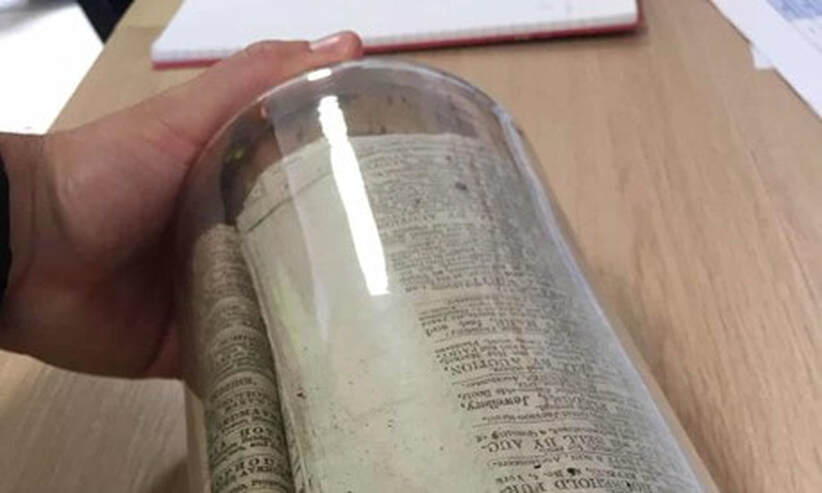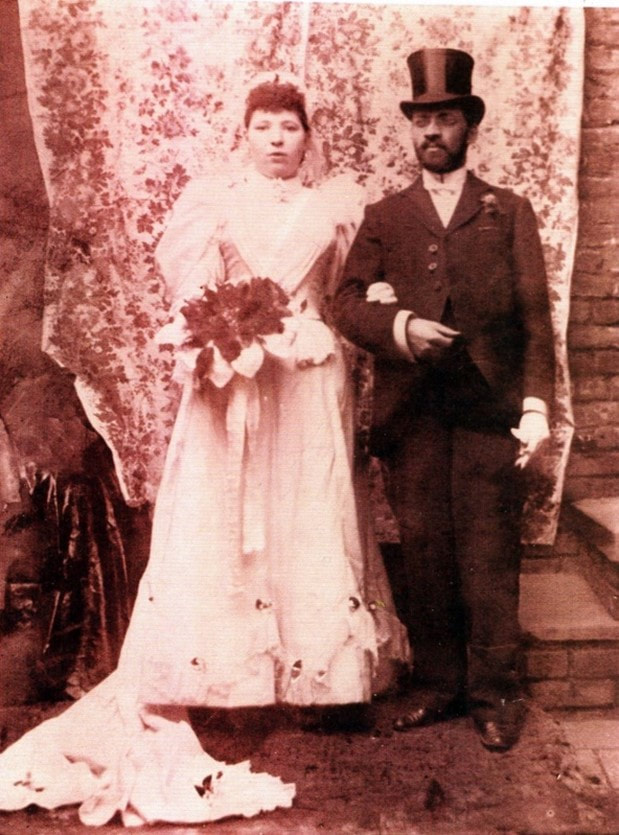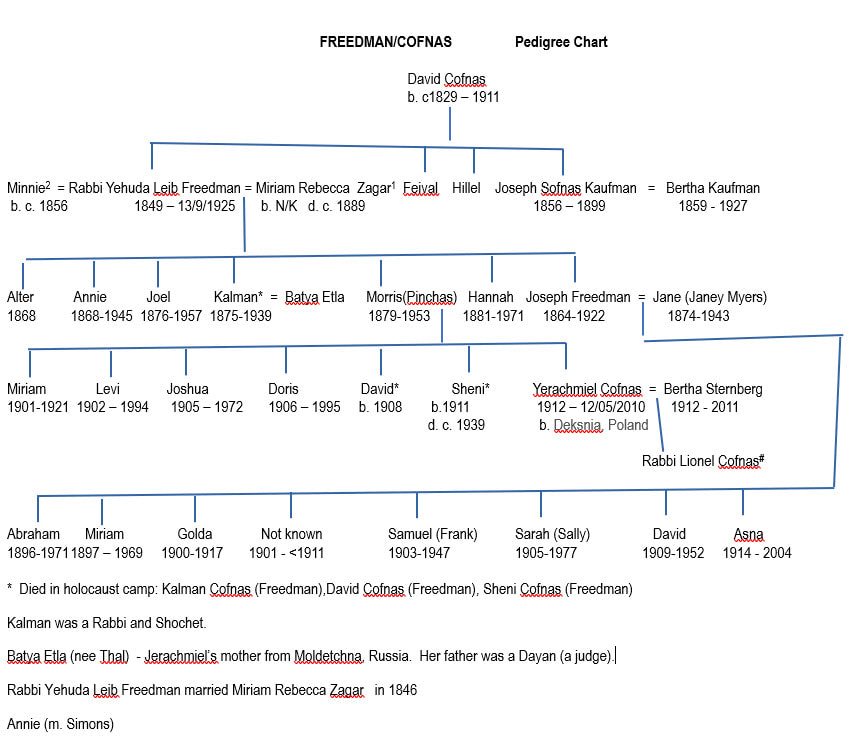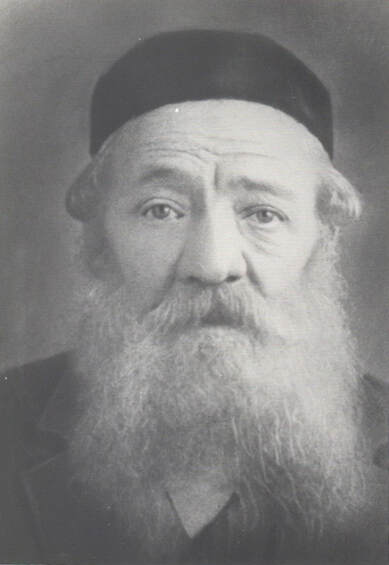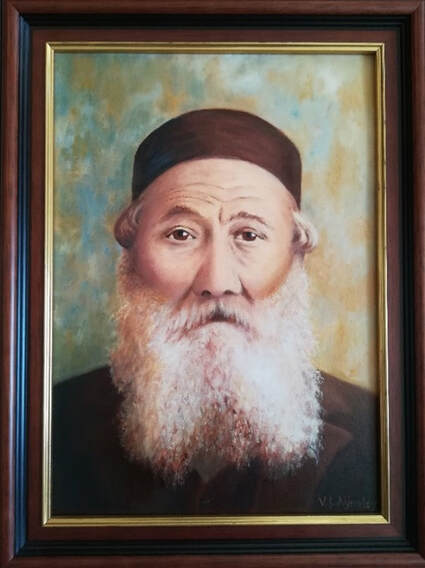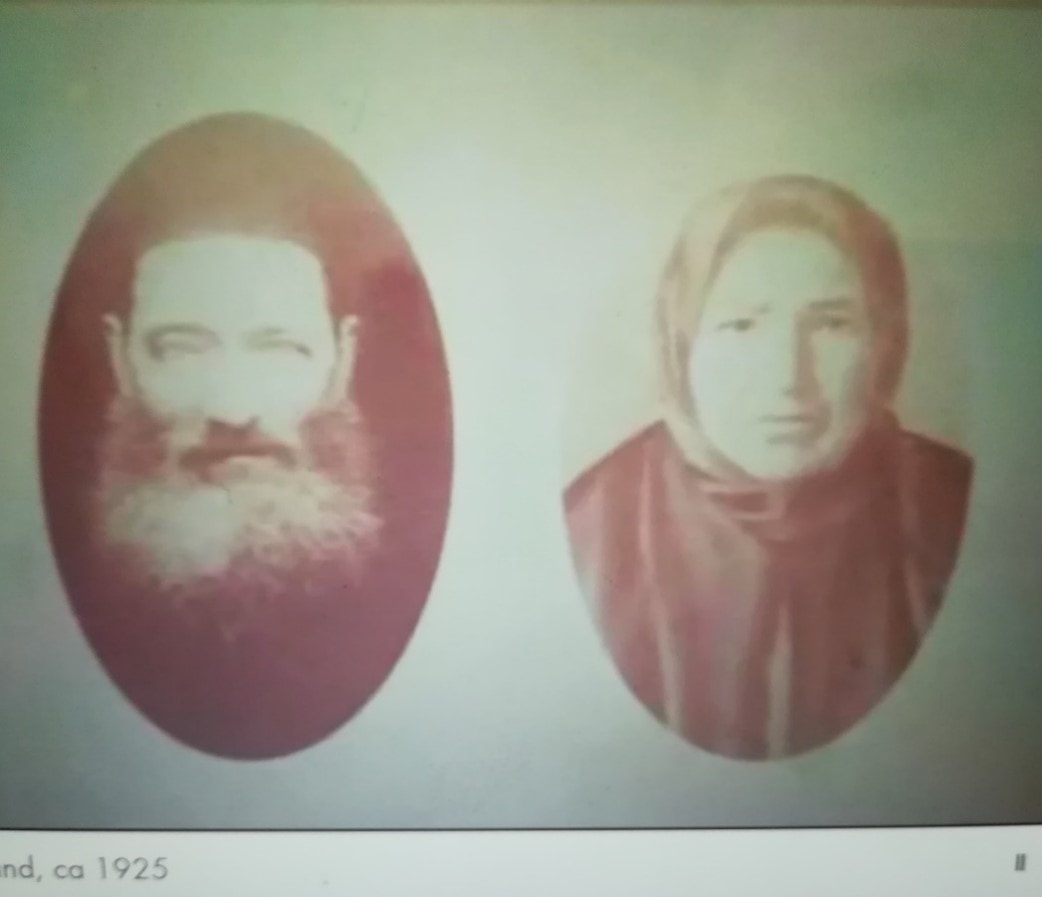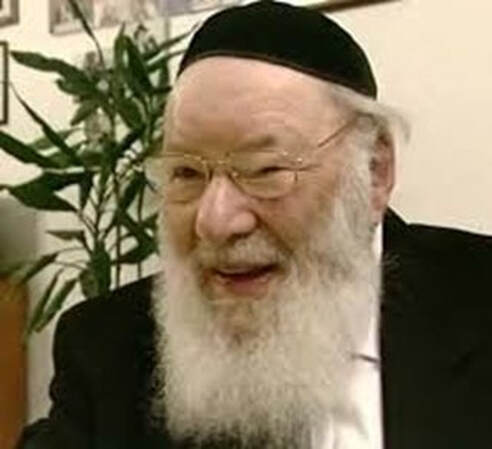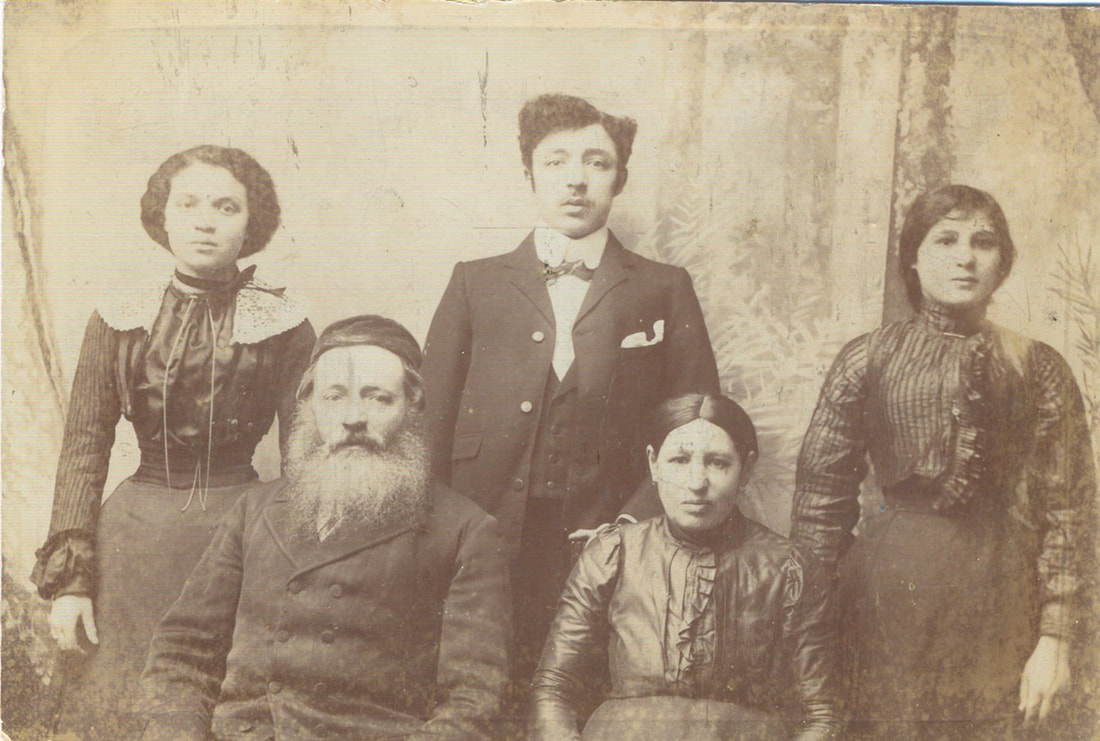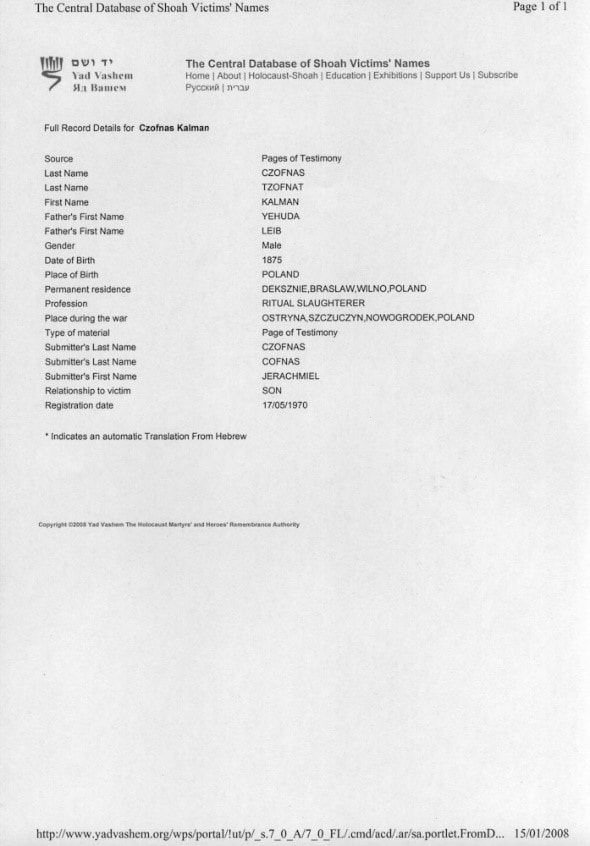|
In January, my 2nd cousin Cathy Aynsley-Smith delighted us with a few poignant extracts from her Mother, Asna Freedman’s Memoirs. The extracts were reminiscences of her early life in Manchester and the events that shaped her as a young woman and wife of non-Jewish husband ‘Dick’ Aynsley-Smith. This month Cathy continues the story by looking back at Asna’s ancestors who emigrated from Latvia and their lives in eastern Europe. Cathy Writes:As described in my previous article my mother, Asna, was born at 57 Lord Street, Cheetham, Manchester. She was the youngest of the eight children of Joseph Freedman and Jane (Janey Myers) Schneider. The Jewish community in Cheetham and the Manchester Jewish Museum At the end of 18th century there was a small Jewish Community in the Cheetham area of Manchester, with its Moorish style architecture the Spanish and Portuguese Synagogue forming its ‘centrepiece’. The former Spanish and Portuguese Synagogue on Cheetham Hill Road is now Manchester Jewish Museum. It is the only Jewish Museum outside London and is housed in the oldest surviving synagogue building in Manchester, completed in 1874. A poster in the upper part of the museum shows a view outside the Manchester Jewish Soup Kitchen. It reads “The Manchester Jewish Soup Kitchen is the only institution of its type in the city. Situated in one of the densest populated parts of the city, it daily dispenses relief where the direst poverty abounds, and has been so doing for the last 41 years.” “An idea of the good work that is carried out, can be had from the following statistics of the last session 16,752 meals were served on the premises 5,751 cans of soup were filled for families to take home. 24,556 loaves of bread, and over 8,00 gallons of soup were distributed.” The soup kitchen opened at the back of a building on Lord Street in Cheetham Hill. These premises were enlarged in 1896 but proved unsatisfactory and so the kitchen moved to more suitable premises in 1901.[3] In 2020 builders working on renovations on the Museum building discovered a 150-year-old time capsule dating from 1873, buried within its historic synagogue walls. A glass jar, which remains intact thanks to a wax seal, was found hidden deep within a wall cavity next to the Museum’s Ark, (the chamber which houses the Torah scrolls) in the cornerstone of the original building.[4] This extraordinary and exciting find is filled with money, synagogue papers and newspapers dating back to the 1870s. The Schneider and Milner AncestryResearching the Schneider branch of the family has proved to be no easy matter. Whilst my mother Asna’s Freedman ancestors have been quite well documented – possibly due to there being at least two rabbis – her maternal ancestors are much more difficult to find. NB. Riga is now in Latvia; Originally Latvia and Lithuania were part of the Russian Empire. After the revolution in 1917 they gained independence. Just one of the problems when researching the Jewish family is the way in which the spellings of names are altered. For example Schneider also appears as Schnayder and Schneiderman. These families are of no less interest to me, however, both in themselves and in their lifestyles of yesteryear. Janey Schneider was born in Riga and then I can find no more information until her marriage to Joseph Freedman in 1895 in Manchester. She died on 16th August 1943 at Manchester Jewish Home for the Elderly. My maternal great grandparents, Joseph Schneider, who was a tailor, and Sarah Leah Milner his wife lived at 29 Katolicheskaya Street in Riga, Latvia. Sarah was born in 1841 in Russia. She died on 23 May 1905 at 19 Hewitt Street, Cheetham, Manchester, England. Her father was Abraham Milner but her mother’s details are not known. Of their seven children: Hannah, Harris, Masha and Eli also lived at Katolicheskaya Street. It is probable that Meyer and Janey also lived in Riga at some time but then moved away. Meyer married Asna Leah Miller in Riga and then a year later emigrated to Manchester before moving to the USA 8 years later. Masha, sadly, died when only 4 years old whilst her parents were still in Latvia. Harris Myers (Schnayder) married Goldy Frankle in 1895 in Leeds and they had two daughters: Mary Myers and Florrie Myers. Florrie married her cousin Simon Gleek who was the son of Nathan Gleek and Hannah Schneider who themselves had 11 other children: Hetty, Lev, Abraham, David, Morris, Harry, Isaac, Meyer, Ada, Eddy and Benjamin. More recent information indicates that Isadore, son of Eli Gershon Schneider and Anna (Uncle of Asna) lived at 373 South Eden Street, Baltimore, Maryland, MD, USA. Asna’s paternal grandfather (Rabbi Yehuda Leib Freedman) and his family were immigrants who fled from the pogroms in Tsarist Russia and settled in Manchester. Asna said that she believed her mother’s family originally came from Germany and later lived in Latvia. Her mother, Janey Schneider, was born in Riga and came to England in 1892 at the age of 18, together with her mother Sarah Milner, her elder sister Hannah and Hannah’s husband Nachman. In 2020, whilst researching my Jewish history, I came across the following article about Rabbi Jerachmiel Cofnas, my second cousin once removed, who was a Rabbi and Shochet in England. He was my mother’s cousin and son of Kalman and Batya who died in the Holocaust. An interview for the Jewish Refugee Voices website: (www.ajrrefugeevoices.org.uk/RefugeeVoices/Rabbi-Jerachmiel-Cofnas) held in 2020 describes Jerachmiel's experience of coming from Poland to Britain in the late 1930’s. 'Having been born in 1912 in Kcynia (Deksnia) in Poland in the Vilna Geburnia area he arrived on a temporary permit for the Birmingham Synagogue and he describes his life and offers a fascinating glimpse into Jewish lifestyle at the turn of the century. Jerachmiel had 2* brothers and 3 sisters. His father was a Rabbi and Shochet (a) and his grandfather, Rabbi Yehudah Leib Freedman, came to Manchester at the turn of the century. Jerachmiel also had uncles in Manchester. After marriage Jerachmiel’s father and mother came to Manchester, where they lived for 10 years and had 4 children but Jerachmiel’s father found life too irreligious for him and eventually moved back to Poland, where Jerachmiel was subsequently born. Jerachmiel’s mother was from Moldetchna, Russia where her father was a Dayan (b). Jerachmiel has vague memories of the First World War and soldiers passing through their small farming community. Life was very hard and they were often hungry. There were about 35 Jews in that farming community but the ground was not fertile and they barely eked a living. They had a shul (c) and led a religious life. He describes the hardships of living in a primitive environment and the intensity of religious life. Jerachmiel and his siblings had private teachers and attended cheder and then went to Yeshivah (d) for older boys. They family moved from Deksnia to Aishishok and then to Ostryn. Jerachmiel went to Radin where he learnt in the Chofetz Chaim Yeshivah and described his memories of the Chofetz Chaim as well as of other great Rabbis in other Yeshivahs, such as Rabbi Shimon Shkob (Breinsker). Jerachmiel learnt to be a shochet from his father and he took semicha and learnt to be a mohel. His brother went to Chevron Yeshivah and then Manchester where he was a Rabbi in Birmingham and he arranged for Jerachmiel to come to Birmingham in the late 1930s.He says: ‘The place I was born was very small, almost like a kibbutz, there were 35 inhabitants and they were all Jewish. The only non-Jewish person was the one who looked after the flock. Everybody was issued with a plot of land, because there was plenty of land in Poland, not inhabited. All the inhabitants of that place were farmers. My father acted as the Rabbi there and, he was the shochet [kosher butcher].’ He found adjusting to live in England very hard since he was not used to seeing non-religious Jews and he knew no English. His sister-in-law taught him and he attended night school. He helped his brother in the shul and eventually took over from him in the New Synagogue in Birmingham. In 1943 he married Bertha Sternberg from Manchester and they had 3 children. He served as Rabbi, shochet and mohel in Birmingham for 45 years and found he got on well with the shul executives. He always saw the good in people and felt his role as mohel (e) brought him close to the congregants.' * Other sources say he had 3 brothers – Levi, Joshua and David a. Shochet: A person certified by a rabbi or Jewish court of law to slaughter animals for food in the manner prescribed by Jewish law. Pronounced ‘sho sha’ b. Dayan: A Judge c. Shul: A Synagogue d. Yeshiva: An orthodox Jewish college or seminary. e. Mohel: A circumcision practitioner History of the Pogroms Pogrom (or organised massacre or expulsion of a particular ethnic group) first came into frequent use as a term around 1881 after anti-Semitic violence erupted following the assassination of Czar Alexander II. An article about a Jewish family would not be complete without reference to some of the atrocities perpetrated against them particularly, and just, within living memory. Asna’s friend and correspondent, Phil Casket, wrote at length about his parents being amongst the many families who emigrated from eastern Europe as a result of the pogrom of 1903. Kishinev (modern day Chisinau, Moldova) was one of the major towns in Bessarabia, a desperately poor part of Russia, between Moldavia and Ukraine. It had the highest infant mortality and illiteracy rates in the Russian empire, the fewest doctors and the fewest paved roads. Jews dominated nearly all the region’s towns, including Kishinev, which had a population that was well over one-third Jewish at the turn of the century. It was at this time that the pogroms were directed at the Jewish people in Russia and Eastern Europe. The most famous pogrom of all began on Easter Sunday 1903 in Kishinev. Rocks were thrown at Jewish shops and the hostilities soon escalated from there. Businesses were ransacked – not one liquor shop was left unscathed. Two-thirds of Kishinev was affected. Entire streets were levelled with 49 Jews left for dead, more than 500 injured, 1300 houses and businesses looted and destroyed and 2000 families left homeless. But it was the violence of the attacks on Jewish people that was so staggering. They were hit with tables, killed with pitchforks and poles, smashed with crowbars. Amongst the many atrocities not suitable to mention here, one man had his eyes gouged out and numerous women and girls were sexually attacked. News of the pogrom and the atrocities soon travelled to America and with Kishinev being near the southern border the news also spread quickly into Europe. The Kishinev pogrom, which was followed by the Nazi treatment of the Jews in the 1930s and 1940s, forms a very powerful background to many Jewish family’s history and the emigration of Jews out of Europe. The Holocaust, also known as the Shoah, was the genocide of the European Jews before and during the Second World War. Asna’s uncle, Kalman, who was a Rabbi and Shochet born in Deksznie,Poland, and her cousins David and Sheni Freedman all died in the Shoah. Kalman and Asna’s father Joseph were two of the sons of Rabbi Yehuda Leib Freedman and his wife Miriam Zagar. After Miriam died, he married Minnie about whom little is known other than in a photo probably taken at their wedding which also shows three of his children by his first marriage. Hannah Rabbi Yehuda Freedman Philip (Pinchas) Minnie (2nd wife) Annie 1881 - 1971 1849 – 1925 1879 – 1953 1810 – 1889 1868 – 1945 Certificates from The Central Database of Shoah Victims’ Names https://yvng.yadvashem.org/ Any family’s history raises the importance of talking to children and grandchildren about family members and prevailing circumstances in earlier days. In the case of the holocaust, it is well known and understood that many of the sufferers were, and their relatives still are, reluctant to talk about the difficult times and just want to forget. It is a relatively recent situation where people do discuss such atrocities with a view to teaching the younger generations and ensuring that such things are never allowed to happen again. Asna’s family think that she certainly knew a lot more than she ever revealed about those horrendous times but not wanting to upset her children would rarely mention or discuss the issues. Apart from knowing that her father was a ‘Rebbe’ and that times were hard for her mother we knew virtually nothing of her childhood, that is, until we persuaded her to write her ‘memoirs’ which I have included in the article in Borders Ancestry for January 2021. [1] National Archives, Moving Here – Migration Histories
https://webarchive.nationalarchives.gov.uk/+/http://www.movinghere.org.uk/galleries/histories/jewish/settling/manchester_jewry_9.htm [2] British Jews In The First World War, Spanish and Portuguese Synagogue, https://www.jewsfww.uk/spanish-and-portuguese-synagogue-manchester-3162.php Jewish Museum , Manchester, https://www.manchesterjewishmuseum.com/ [3] Soup and Reform: Improving the Poor and Reforming Immigrants through Soup Kitchens 1870–1910 https://link.springer.com/article/10.1007/s10761-017-0403-8 [4] BBC, Jewish time capsule from 1870s found in Manchester synagogue https://www.bbc.co.uk/news/uk-england-manchester-54278284
0 Comments
|
AuthorSusie Douglas Archives
August 2022
Categories |
Copyright © 2013 Borders Ancestry
Borders Ancestry is registered with the Information Commissioner's Office No ZA226102 https://ico.org.uk. Read our Privacy Policy
